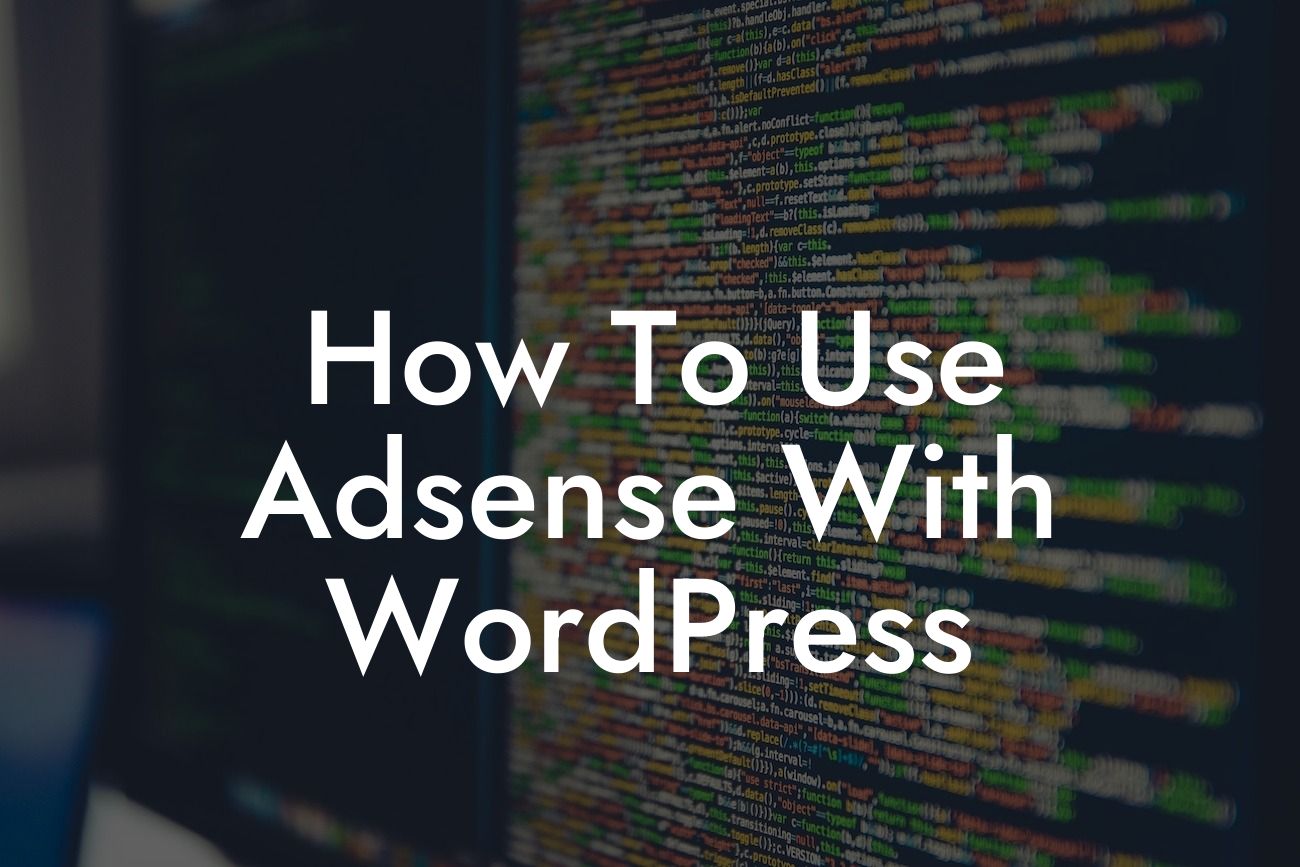Are you a small business or entrepreneur looking to monetize your WordPress website with Adsense? Look no further! In this comprehensive guide, we will walk you through the step-by-step process of effectively using Adsense with WordPress. Say goodbye to cookie-cutter solutions and embrace the extraordinary as we help you navigate the world of online advertising and maximize your website's revenue.
Getting started with Adsense on your WordPress website is easier than you might think. Follow these steps to ensure a seamless integration and optimize your earnings.
1. Setting Up Your Adsense Account:
First, you'll need to create an Adsense account if you don't already have one. Head over to the Adsense website and sign up using your Google account. Once you're approved, you'll receive a unique publisher ID that will be crucial for the integration.
2. Installing and Activating the Adsense Plugin:
Looking For a Custom QuickBook Integration?
To efficiently manage your advertisements on WordPress, installing a suitable Adsense plugin is essential. We recommend using the "Adsense Plugin by WPQuads" for its user-friendly interface and powerful features. Once installed, activate the plugin to start customizing your ads.
3. Configuring Ad Units and Placements:
With the Adsense plugin activated, you can now start creating ad units. Choose from various formats such as display ads, in-feed ads, or matched content ads. Experiment with different ad placements to find what works best for your website's layout and user experience.
4. Optimizing Ad Performance:
To maximize your Adsense earnings, it's crucial to optimize the performance of your ad units. Consider factors like ad size, ad position, and ad types. Perform A/B testing to identify the combination that yields the highest click-through rates. Additionally, using responsive ads ensures optimal ad visibility across different devices.
How To Use Adsense With Wordpress Example:
Let's say you own a blog focused on travel tips. By strategically placing Adsense display ads within your blog posts, you can generate revenue while simultaneously enriching your user's experience. For instance, if you write an article about the "Top 10 Must-Visit Destinations," inserting relevant ad units within the content can captivate your readers and entice them to explore further.
Congratulations! You are now equipped with the knowledge to effectively use Adsense with WordPress. Monetize your website today with the help of DamnWoo's exceptional WordPress plugins. Explore our wide range of plugins tailored exclusively for small businesses and entrepreneurs and elevate your online presence to new heights. Don't forget to share this guide with others who might find it helpful on their journey to digital success!













